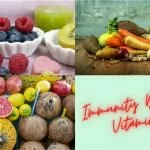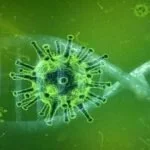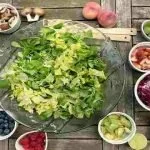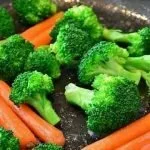Water Soluble Vitamins
The Water Soluble Vitamins are B-Complex and Vitamin C. Being water soluble vitamins, they are easily absorbed and the excess consumed is excreted in the urine. A vitamin that can dissolve in water. Water-soluble vitamins are carried to the body’s tissues but are not stored in the body.
B-Complex Vitamin
It discovered eleven water soluble vitamins B-complex Vitamin Of which eight are considered essential for humans. They differ from each other in their structure , distribution in foods, stability and symptoms that result from their deficiency. They are
- Thiamine (Vit. B1)
- Riboflavin (Vit. B2)
- Niacin
- Pyridoxine (Vit. B6)
- Panlothenic acid
- Biotin
- Folic Acid
- Cobalamin (Vit. B12)More about the benefits of vitamin B-12
These eight water soluble Vitamins are grouped together because their functions are closely related. The remaining three B-Complex Vits. Namely para-aminobenzoic acid , choline, and inositol play an active role in cell metabolism but the diet and intestinal synthesis can make good this requirement.
Thiamine (Vitamin B1)
Water Soluble Vitamins B1 is very unstable at high temperature. It is particularly essential for carbohydrate metabolism. After absorption it is carried to the liver where it is phosphorylation. Total body concentration is 25 mgm, the excess is excreted in urine.
Function
Thiamine performs the following functions .
- Thiamine functions mainly as a co-enzyme , thiamine prophosphare , which is required in the breakdown of glucose to yield energy.
- It helps to maintain a healthy nervous system.
- It is required for normal appetite and digestion.
Source
Foods rich in protein such as pork, liver, pulses, groundnut and eggs are good sources. Wholegrain and enriched cereals parboiled rice, unpolished rice and sprouted pulses contribute Vitamin B1. Soya bean is a rich source.
Deficiency
It causes symptoms of peripheral neuritis , mental depression , disturbed general metabolism with loss of weight. The deficiency affects gastro-intestinal tract , cardiovascular system and peripheral nervous system. Severe Water Soluble Vitamins B1 deficiency produces the disease called Beri-Beri so named as the patient suffering from it develops sheep like galt.
Vitamin B2 (Riboflavin)
Water Soluble Vitmains B2 is a yellow fluorescent pigment. It is heat stable but is readily destroyed by ultraviolet rays.
Source
Liver , meat extract, eggs, kidneys, yeast , milk , cheese.
Functions
- Concerned with protein , carbohydrate and fat metabolism.
- It is an essential growth factor.
- It is associated with tissue repairs.
- It converts tryptophan into niacin.
- In cells it is found in form of FAD or FMN>
- It is associated as coenzyme in tissue oxidation and respiration.
Deficiency
- Growth is retarded.
- The skin develops cracks and fissures, especially at corners of the mouth
- Eyes turn red due to vascularization of cornea , which causes photophobla. Corneal ulcers result in corneal opacities. The tendency to cataract formation increases.
- The nerves develop myelin degeneration.
- Swelling of lips with cheilosis
Niacin
It is also called Pellagra preventing factor. It is a white crystalline water soluble Vitamins And also obtained from tryptophan with the help of Riboflavin. One part of niacin is formed from 60 parts of tryptophan . in body fluids niacin is converted to nicotin amide.
Source
Whole meal flour , milk , meat extract , liver, kidneys, eggs.
Function
- It is concerned with H+ ions donor accept or system in the body.
- It tends to lower serum cholesterol levels.
- Nicotin amide acts as coenzyme in metabolism of fat , protein and carbohydrate.
Deficiency
It is seen in low protein or maize based diets. Pellagra, which means rough skin. Deficiency begins with weakness, headache , loss of appetite and weight and a sore and swollen tongue.
Vitamin B6 (Pyridoxine)
In addition to its intake with diet, the pyridoxine is also synthesized in the intestine.
Source
Liver , meat , fish , molasses , leguminous plants, cabbage.
Functions
- Essential for normal amino acid metabolism.
- Associated with Hb synthesis.
- Associated with enzyme activities in brain.
- Concerned with decarboxylation of serotonin.
- Acts as coenzyme in linoleic acid metabolism.
Deficiency
In human beings is very rare. It has however been observed in patients on prolonged INH therapy and use of oral contraceptives , also in connection with cycoloserine therapy and in some rare cases of pregnancy.
Folic Acid
It is along with Water Soluble Vitamins B12, folic acid is of importance in haemopoiesis. Structurally it is peteroyl monoglutamic acid made from pteroric acid and glutamic acid. It metabolically activated in jejunum.
Source
Liver, kidney , green leafy vegetables , whole pulses and yeast and in fermented food such as idli , dhokla and dosa. Some bacteria present in the intestinal tract are capable of synthesizing the Vitamin.
Function
In order to perform its functions , folic acid needs to be converted into its active form. Vitamin C is needed for this conversion.
Deficiency
Its results in megaloblastic anemia which is common in underdeveloped countries among the vulnerable age group. In folic acid deficiency the bone marrow releases large nucleated cells into the circulation.
Vitamin B12
It is also called anti-pernicious anemia factor. It remains stored in the liver, where its half life is 12 months . that is why pernicious anemia develops only after prolonged Water Soluble Vitamins B12 deficiency.
Source
Liver, meat, fish , eggs , milk. In the stomach Vitamin B12 if released from food and forms a complex with intrinsic factor from gastric mucosa. This Water Soluble Vitamins B12 Intrinsic factor complex as such is absorbed, after which B12 Intrinsic factor complex as such is absorbed , after which B12 is released and enters circulation.
Function
- It helps folic acid in the synthesis and maturation of RBCs.
- It is essential for formation of myelin sheath around nerve fibres.
Vitamin C
Water Soluble Vitamins C is also known as the fresh fruit and vegetable Vitamin. It was discovered as an acid in Lime Juice. It is white , crystalline , water soluble, strong reducing agent , easily lost by action of heat, except man , many mammals can synthesize Vitamin C in the body.
Source
Green Vegetables , fresh fruits , amla , germinating cereals. Rose lips are the richest sources of Vitamin C.
Function
- Making hemoglobin by helping in absorption of iron from food.
- Healing of wounds and fractures.
- Increasing resistance to infections and fevers.
- Proper growth during periods of increased need or during rapid growth.
- As an antioxidant ,like Vitamin E , it prevents the oxidation of Vitamin A and unsaturated fatty acids.
Related posts:
Classified of Nutrition It is broadly Classified of Nutrition into ...
Vitamins Deficiency The Symptoms appear if there is deficiency of V...
What are Vitamins Vitamins is the term used for a group of potent o...
Why is the Need to Boost Immunity? The immune system is incorporat...






Hi there, just become aware of your blog via Google, and located that it is really informative. I’m going to watch out for brussels. I will be grateful in the event you continue this in future. A lot of folks shall be benefited from your writing. Cheers!